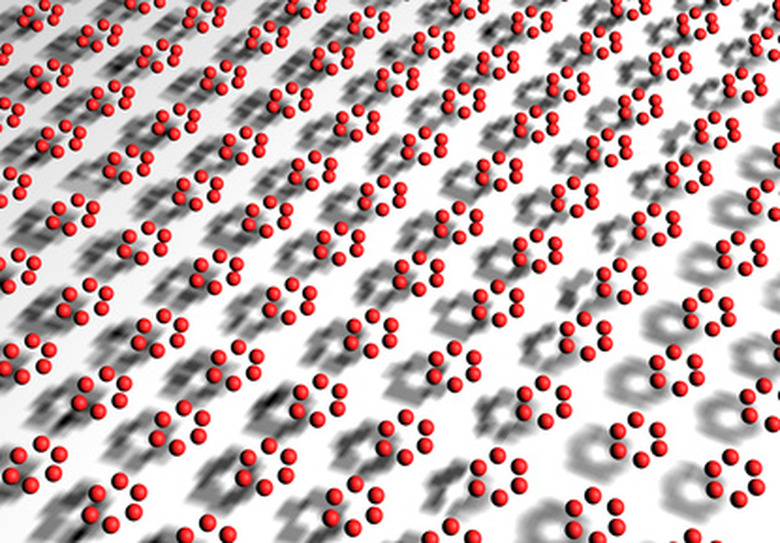How To Create Models Of Molecular Compounds
The structure of molecules is very important as this provides information on how the molecule will interact with other compounds. The shape dictates the compound's freezing point, boiling point, volatility, matter state, surface tension, viscosity and more. It is much easier to understand a compound's structure by seeing it in a 3D model. Different bonds have different angles and the different elements in the compound are represented by different colors. The more elements and bonds in a compound the more advanced and complicated the geometry of the compound structure.
Step 1
Draw the structure of the chosen molecule using the Lewis dot structure. The Lewis dot structure shows the main elements, number of valence electrons and what compounds are bonded to the central compound.
Step 2
Determine the angles that are needed around each main compound. A compound that has four bonds will have the bonds 109.5 degrees apart in a tetrahedral arrangement. Three bonds in a trigonal planar arrangement are separated by 120 degrees. Two bonds off the main compound are in linear arrangement and are separated by 180 degrees.
Step 3
Paint the Styrofoam balls the appropriate colors. The Styrofoam balls for carbon will be the same color, oxygen Styrofoam balls will be another color and hydrogen balls an additional color. The more different elements in the compound the more colors needed.
Step 4
Connect the balls with Popsicle sticks or pipe cleaners. Use the bond angles of the compound to get the structure correct. Single bonds require one pipe cleaner, double bonds two pipe cleaners and triple bonds three pipe cleaners. For sturdy connections place some glue on the ends of the pipe cleaners before inserting them into the Styrofoam balls.
Things Needed
- Styrofoam balls
- Paint
- Pipe cleaners or Popsicle sticks
- Glue
References
Cite This Article
MLA
Tomas, Liz. "How To Create Models Of Molecular Compounds" sciencing.com, https://www.sciencing.com/create-models-molecular-compounds-7348338/. 24 April 2017.
APA
Tomas, Liz. (2017, April 24). How To Create Models Of Molecular Compounds. sciencing.com. Retrieved from https://www.sciencing.com/create-models-molecular-compounds-7348338/
Chicago
Tomas, Liz. How To Create Models Of Molecular Compounds last modified August 30, 2022. https://www.sciencing.com/create-models-molecular-compounds-7348338/
